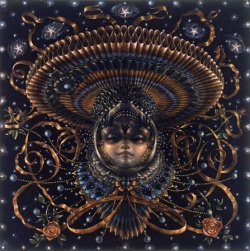Difference between revisions of "5 hindrances"
m (1 revision: Robo text replace 30 sept) |
|||
| Line 16: | Line 16: | ||
{{R}} | {{R}} | ||
[http://www.dhammawiki.com/index.php?title=Five_hindrances www.dhammawiki.com] | [http://www.dhammawiki.com/index.php?title=Five_hindrances www.dhammawiki.com] | ||
| − | |||
| + | {{BuddhismbyNumber}} | ||
[[Category:Hindrances]] | [[Category:Hindrances]] | ||
Revision as of 03:53, 20 April 2014
5 hindrances
Sense desire (kamacchanda)
Anger (byapada)
Sloth and torpor (Thina-middha)
Agitation and worry (Uddhacca-Kukkucca)
Extreme skepticism (vicikiccha)
(from Anguttara Nikaya 9.64)
Listed above are the five Hindrances to meditation. Each one or a combination of more than one can prevent a successful practice. If you have too much sense desire you will find your Mind wandering in Meditation toward those things which you crave. If you are full of Anger, you will be agitated and it will be very difficult to stay concentrated on your Meditation subject. Sloth and torpor refers to sluggish-ness. You may just be tired and in need of rest. After you are rested, you can return to your Meditation practice. Agitation and worry will keep your Mind occupied away from your subject the same way that Anger works in that way. Extreme skepticism refers to your doubts in the Dhamma or your ability to practice. This is normal for any meditator, but as you learn more, the Doubt will fade and you will proceed with your practice.
Very few people can eliminate all five hindrances all the time, except for Enlightened ones. But there may be times when your Concentration is strong and you can eliminate the five hindrances for at least a Meditation session. When this happens there is the opportunity to enter some advanced states known as the jhanas.
